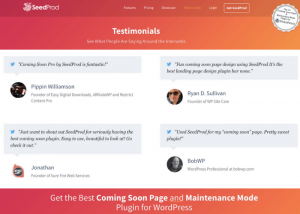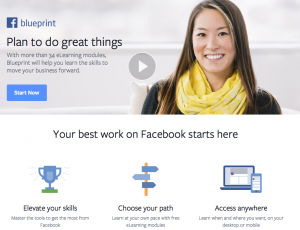— November 7, 2017

lukasbieri / Pixabay
When numbers start to slide and recruiting feels more difficult than ever before, it’s easy to blame a skills shortage that’s affecting nearly every industry. But finding a scapegoat does nothing to improve staffing, and only provides tunnel vision that neglects opportunities for improvement. If you’re recruiting the same way you were five years ago, then it’s time to adapt to the current state of the market and refocus on consultant redeployment. Today’s recruiting is a whole new ball game, and while many staffing firms have strategies that start strong, they fail to evolve over time. There are a number of reasons this happens, as well as several proven solutions that you can enact immediately.
Old Recruiting Habits Die Hard
For years, the job board was preached as the be all and end all staffing tool, especially for contract talent. While they still have their place in the tool belts of today’s effective recruiters, job boards are simply no longer successful as the primary method of recruiting. More recently, there is so much competition for high-demand skill sets in fields such as IT, healthcare, and skilled trades that job boards are not yielding the results they used to. The talent pool is too small to live (and increasingly, die) by the job board.
In contrast to the reliance on job boards, an equally unproductive recruiting habit for modern success is disregarding or not fully using databases. This is highlighted in two distinct ways. First, every recruiting firm has a subset of candidates in their database that have been screened, interviewed, and even given skill tests only to end up never being placed in a job. Worse, these already-vetted candidates are often never revisited as a recruiter uses their time instead to track down new candidates.
Secondly, that same focus on finding new talent means relationships with current consultants out on jobs are not actively maintained, which is why some staffing firms have redeployment rates as low as 5%. This often indicates a lack of foresight in strategy, as it is drastically easier and more cost-effective to retain current talent than to recruit new candidates. If improving contractor care and engagement provides a golden opportunity for staffing firms to improve, how can candidates in a database be further engaged? How can redeployments be increased?
Engaging Current Consultants
Meaningful and engaging relationships with consultants require consistent communication and conversation that adds up to a positive candidate experience. Redeployment can be increased by staying top-of-mind with consultants as they look toward securing their next role. But in order to be their employer of choice at that time, it takes more than reaching out to them just once toward the end of their current assignment. For example, if you have a contractor out on a six-month project and don’t reach out to them at all until month five, it will be too late. By then, they’ll already be fielding multiple offers from other firms.
Building relationships with consultants that are currently on assignment can take any form that modern communications allow. Think in terms of texts, emails, newsletters, calls, and even direct mailings. Create content like a blog entry on an industry trend that’s relevant your candidates and send it to them. Each month, compile insightful articles that you’ve found online and pass them along to consultants who will find them interesting. Send out a list of open positions that you’ll be looking to fill soon, and remind consultants about your referral program. Lastly, don’t be shy to pick up the phone to ask them how their current job is going. Making a point to regularly keep in touch shows a consultant that you care, and will have them turning to you for their next role.
Utilizing Candidate Engagement Software
Luckily, candidate engagement software exists to assist in building and maintaining relationships with the talent sitting in your database. These programs are made to keep track of and automate communications, and more options are coming to market at an increasing rate. However, many staffing firms are slow to adopt new technology even though it’s the very answer to their recruiting problems.
Consider the fact that personalized correspondences can be automated, meaning one recruiter can send out an email to 200 developers in their database that wouldn’t have been touched otherwise. If even five of them reply to continue the conversation, then that’s five more opportunities to engage and redeploy talent that required little initial effort. It can be hard to sift through all the software options available, and there are many questions to ask when choosing the best staffing software for you, but the ROI makes it worth the effort.
Rethinking and Refocusing Metrics
Are your recruiters trained to gauge their own performance based on certain metrics? While there’s nothing inherently wrong with using performance numbers as a guide, focusing on the wrong ones is something that has been driving recruiters away from building relationships with consultants. One popular metric measures the number of interviews a recruiter has during a given week or month. Unfortunately, this places a clear priority on seeking new talent. Recruiters concerned about hitting goals on their interview metric will be focused on pumping in new names rather than talking to current consultants.
It’s time to redefine recruiting roles, and introduce metrics based on engagement that incentivize recruiters to have conversations and build relationships with talent already in their database. The reason we’re seeing such a struggle in recruiting right now is that a firm’s main focus is on securing new talent despite the fact that there’s less new talent to be found. Continuing with that strategy will only make success harder to come by. Tapping into your database, building relationships, and increasing redeployments effectively increases your available talent pool.
Improving Organization
It’s worth noting that many staffing firms looking to refocus their efforts on relationships and redeployment may be unsure where to start. This issue almost always stems from a lack of organization, or rather, not using their ATS to its fullest potential. Follow the path of a candidate as they enter your system and are vetted, and see where in your database they fall. An ATS can help you keep track of when consultants began or will be coming off of an assignment, and help you pinpoint those you need to reengage.
Successful Recruiting Means Adapting
Change can be hard, but it’s essential for any staffing firm that wants to maintain long-term success. Current market conditions are not a phase; this is the new normal, and that requires adaptation. Even if (or when) the U.S. economy experiences another downturn, any small dip in demand will still result in the imbalance of a vast number of open roles that drastically outweigh the supply of available talent. Refocusing recruiting efforts on consultant relationships and redeployment is a sure way to tip the scales in your favor.
This post was written in collaboration with Tom Erb
Business & Finance Articles on Business 2 Community
(93)






